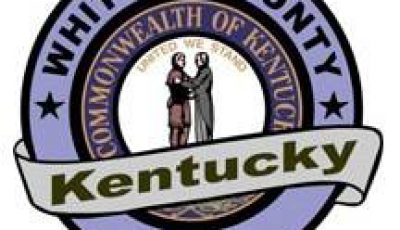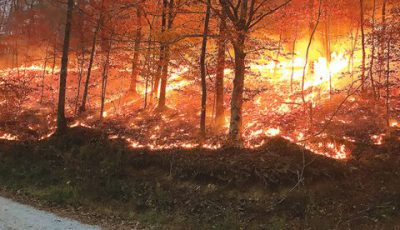Livestock producers can get assistance following drought, wildfires
Livestock producers in Whitley and Bell counties may be eligible for assistance from the Livestock Forage Disaster Program (LFP) for grazing losses incurred in 2016.
“Bell and Whitley County recently met qualifying drought ratings that ‘trigger’ eligibility for the Livestock Forage Disaster Program on improved pasture, native pasture, and sorghum forage,” said Megan Moore, County Executive Director (CED) for the U.S. Department of Agriculture (USDA) Farm Service Agency (FSA) in Barbourville.
The Livestock Forage Disaster Program provides compensation to livestock producers who have suffered grazing losses due to drought or fire.
Qualifying fires are those occurring on rangeland managed by a federal agency and the producer is prohibited by the federal agency from grazing the normal permitted livestock on the managed rangeland due to the fire.
Eligible livestock include alpacas, beef cattle, buffalo, beefalo, dairy cattle, deer, elk, emus, equine, goats, llamas, poultry, reindeer, sheep or swine that have been or would have been grazing the eligible grazing land or pastureland during the normal grazing period.
Applications are required for 2016 losses. To expedite applications, producers who experienced losses in 2016 are encouraged to collect records documenting their losses. Supporting documents may include information related to grazing leases or federal grazing permits, contract grower agreements, and more.
“We encourage producers to contact our office for an appointment, and to learn what records are required to apply for assistance,” Moore said.
For more information, contact the Barbourville FSA office at 606-546-3373. Information can also be obtained online at: disaster.fsa.usda.gov.
U.S. Agriculture Secretary Tom Vilsack has designated Bell, McCreary, and Whitley counties as agricultural disaster areas due to the ongoing drought. Farmers in counties contiguous to those counties also may be eligible for aid; those counties are Clay, Harlan, Knox, Laurel, Leslie, Pulaski, and Wayne, as well as Campbell, Claiborne, and Scott counties in Tennessee and Lee County in Virginia.
A Secretarial disaster designation makes farm operators in the primary and contiguous counties eligible to be considered for certain aid, including emergency loans, from the U.S. Farm Service Agency (FSA). Farmers in eligible counties have eight months from the date of the declaration to apply for emergency loans.
“The drought that has gripped Kentucky in recent months has been especially hard on farmers,” Kentucky Agriculture Commissioner Ryan Quarles said. “Crops have been affected, and livestock producers have been forced to feed hay earlier than usual because their pastures are depleted. This aid will provide much-needed resources for Kentucky farmers.”
Commissioner Quarles said the Kentucky Department of Agriculture (KDA) is working closely with federal and state agencies, agricultural organizations, weather forecasters, and emergency management officials to monitor local conditions.
“We are grateful to Governor Bevin, Kentucky’s congressional delegation, and our agricultural leaders for helping make this disaster aid available,” Quarles said. “The wildfires in eastern Kentucky have been the primary concern, but our leaders also were mindful of the drought’s impact on agriculture, and we appreciate their consideration.”
During the month of November, wildfires burned more than 3,000 acres of land in Whitley County alone.
The KDA operates an online hay/forage sales directory where farmers in need of forages to buy can search by county. Entries contain information on the nutritional and energy levels of the forages offered for sale. To search for available forages for sale, go to kyagr.com/buyky/hay-search.aspx.
Commissioner Quarles also has activated the Hay Hotline for farmers who need to find hay or who want to make hay available for sale. For more information about the Hay Hotline, or to post hay for sale, go to kyagr.com/marketing/hay-hotline.html or call (502) 782-4110.







